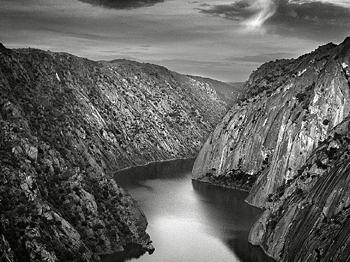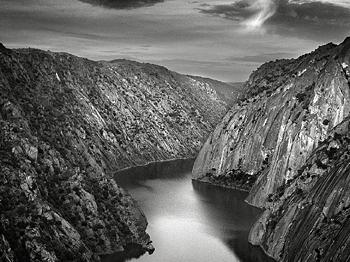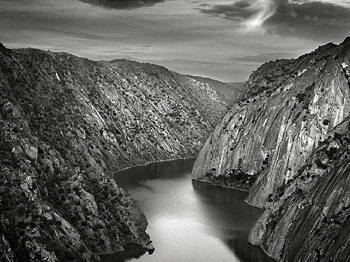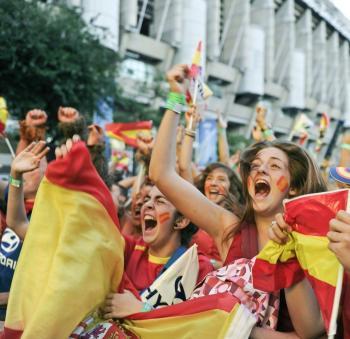Trapiello said he chose this issue to photograph because “It’s related to climatic change and the influence of man over the environment. There are several artistic currents that express these concerns through images, such as the New Topography School, which I’m very interested in.”
His career as an engineer helped his photographic art. “Being an engineer has helped me to be very organized in my work, to be very rational.”
The eerie landscape in the winning photo has an unreal quality that the photographer relates to classic images. “It’s man’s hand that causes strangeness. Actually, it is a very classical photograph in the style of Ansel Adams.”
Trapiello shared technical secrets of his winning entry. “It was taken at dusk—hand-held, without a tripod—and from a viewpoint over the dam. I had to be very still to achieve the desired sharpness. I used a Sony DSC F828 digital camera, with a 35 mm lens.”
The photographer said the low light and not using a tripod required several shots to gain the desired effect. He edited the image in Photoshop with some retouching but no digital manipulation.
Although the photograph was originally in color, Trapiello decided on a final image in black and white. In the editing process, he overexposed the sky and added volume to the rocky landscape and depth to the water below. “I take lots of care with the editing of my photographs,” he said.
Five years ago, Trapiello realized he could express himself in another language—that of images. “The language of image is a very peculiar one; you have to be patient to learn to understand it and speak it. It was a bit hard for me, but I was good at reading and speaking it.”
He says he became more fascinated and his hobby turned into “an obsession.” By observing the work of other photographers, he said, “You realize that it’s a language far more complex than what it seemed.”
When asked what it takes to take a good photograph, Trapiello said that the hardware is not important and that with determination, one can learn the necessary technical knowledge.
“It is important to have sensibility, to have a poetic look, loaded with sentiment, and also be willing to tell something.”
Photographs “without content ... are not good photos to me.” He says the best way to take a great photo is to study the masters in the field “to discover your photographic parents.”
He mentioned outstanding photographers in Spain: “Juan Manuel Castro Prieto, Juan Valbuena, and Alberto García Alix have influenced me in this regard. They have in common the ability to know how to tell things with a sensitive eye.”
When describing the process of making a beautiful photograph, Trapiello quoted Bernard Clouseau: “It’s something inside you, the process appears before and during the time it takes you to make it. It’s already inside of you. That’s why you look at that specific thing, because it is a picture you had already taken.”
Trapiello has taken many photography courses and has also taught photography. He admits to taking many unsuccessful photos before succeeding. Speaking of mastering the art, he said, “The moment you begin to be proud of the pictures you take is when you can notice your influences, and also see a personal touch.”
Looking at the work of others and understanding one’s inner qualities are important to taking beautiful photographs. “You have to look at other’s pictures continuously to cultivate that language. It’s a way of enriching our form of expression, the rest is what’s inside of each one of us.”
He says his photos are an intimate part of him. “My photos are a faithful reflection of my personality. I am a very sensitive person, very quiet. My photos are very calm—like me. You can know me perfectly by reading my pictures, beyond a superficial reading.”





